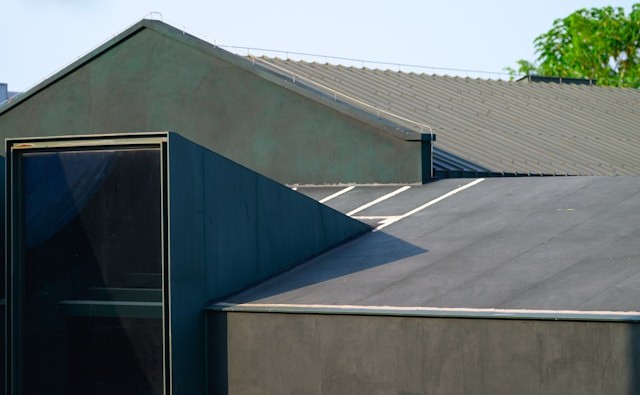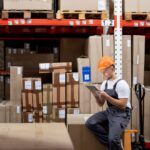Discover how modern fibreglass systems are revolutionising flat roofing in the UK—offering superior performance, longevity, and sustainability over traditional materials.
Flat roofing has become a mainstay of British architecture, particularly in domestic extensions, garages, commercial properties, and new-build developments. Its clean lines and space-saving potential make it a popular choice—but historically, flat roofs have also attracted criticism. Concerns around durability, leaks, maintenance, and environmental impact have plagued traditional materials like felt and bitumen for decades.
However, advances in construction materials are transforming perceptions, with fibreglass now leading the charge as a robust, reliable, and sustainable solution for flat roofing in the UK. Known in the trade as GRP (glass-reinforced plastic), fibreglass is gaining traction among contractors, property renovators, and self-builders seeking a future-proof approach to roofing.
This article explores how fibreglass is reshaping the flat roofing sector—delivering performance benefits that far exceed legacy systems while aligning with growing demand for greener, low-maintenance building materials.
The Legacy of Traditional Flat Roofing
Flat roofs, despite their simplicity and appeal, have often struggled with long-term performance. Traditional felt-based systems, while affordable and easy to install, are prone to cracking, UV degradation, and poor resistance to standing water. Bitumen, another staple material, offers better sealing properties but can become brittle over time and demands regular maintenance.
As a result, property owners have frequently found themselves dealing with leaks, thermal inefficiencies, and repeated patching or full replacements—raising the total cost of ownership and undermining confidence in flat roofing as a whole.
With changing building regulations and a heightened emphasis on both energy efficiency and sustainability, the industry has increasingly looked towards alternatives that offer durability without compromising environmental or economic values.
Enter Fibreglass: The Game-Changer in Modern Roofing
Fibreglass roofing systems offer a step-change in both technical performance and aesthetic quality. Composed of layers of glass matting and resin, GRP forms a seamless, rigid membrane that is both weatherproof and highly resistant to wear and tear.
One of the standout advantages of fibreglass is its exceptional durability. A professionally installed GRP roof can last 30 years or more with minimal maintenance. Unlike felt or bitumen, it doesn’t crack under UV exposure or temperature fluctuations, nor does it suffer from seam failures—since the entire roof forms a single, continuous surface.
Water ingress, one of the main failings of older systems, is virtually eliminated with fibreglass. Its seamless application removes vulnerable joints and overlaps, which are typically the first points of failure in traditional flat roofs.
Installers are increasingly opting for solutions like the heavy-duty fibreglass roofing kit from Apex Fibreglass Roofing Supplies, which provides everything required for a professional-grade finish—including resins, matting, topcoats, and hardeners. These comprehensive kits ensure consistency, simplify planning, and provide peace of mind for tradespeople and self-builders alike.
Low Maintenance, High Return
One of the key selling points of fibreglass roofing is its long-term cost efficiency. While the initial outlay may be slightly higher than that of felt, the overall lifecycle costs are significantly lower.
GRP roofs are virtually maintenance-free, requiring only occasional cleaning and visual checks to remain in optimal condition. There’s no need for annual re-coating or emergency repairs following heavy weather—common occurrences with more vulnerable materials.
This makes fibreglass especially appealing for rental property owners, commercial building managers, and homeowners who value reliability and low ongoing expense.
Sustainability and Energy Efficiency
As the UK edges closer to net zero targets, the construction sector is under pressure to adopt more sustainable materials and methods. Fibreglass roofing aligns with this shift in several key ways.
First, its longevity reduces waste over time. A longer lifespan means fewer roof replacements, less material sent to landfill, and reduced overall resource consumption. Second, GRP materials can be manufactured with lower embodied energy compared to some traditional options. And finally, fibreglass roofing can be integrated with insulation layers and green roofing systems to improve building thermal performance—cutting down on energy use and emissions.
Moreover, fibreglass’s chemical resistance makes it suitable for rainwater harvesting systems, which are becoming more common in sustainable building designs. The non-porous, inert surface ensures water quality is maintained without contamination—an often-overlooked benefit for eco-conscious homeowners and architects.
Speed and Simplicity of Installation
Another compelling advantage of fibreglass is the speed of installation. For experienced roofers, a fibreglass system can be applied quickly—even in complex or confined spaces. Because the application process is cold-applied (i.e. no need for naked flames or hot works), it’s also safer and more flexible on-site.
A typical installation involves the decking, resin-impregnated matting, and a topcoat, which cures to form a fully bonded, seamless membrane. Components are light and easy to handle, reducing physical strain and time on site. Additionally, coloured topcoats can be selected to match surrounding aesthetics—offering a cleaner, more modern finish than traditional bitumen or felt.
Suppliers like Apex Fibreglass Roofing Supplies play a vital role in ensuring consistent product quality and technical support. With nationwide delivery, expert advice, and tailored kits for different project sizes, they’re enabling more tradespeople to confidently embrace GRP systems on everything from domestic extensions to commercial refits.
Ideal for a Range of Applications
While fibreglass is often associated with domestic builds, its versatility makes it suitable across a wide range of sectors and property types:
- Domestic: Extensions, garages, dormers, porches
- Commercial: Office blocks, retail outlets, workshops
- Public sector: Schools, hospitals, libraries
- Industrial: Plant rooms, flat-roofed warehouses
It’s also ideal for custom projects, including balcony overlays and garden room roofs, thanks to its high aesthetic quality and resistance to foot traffic when properly finished.
Overcoming Misconceptions
Despite its growing popularity, fibreglass still suffers from a few lingering misconceptions—mostly rooted in outdated comparisons with early GRP installations or misapplication by untrained installers.
Today’s systems are light-years ahead in terms of formulation and performance. With the right supplier and proper installation training, fibreglass roofing is a highly reliable and professional-grade option. As awareness grows and more case studies emerge, the reputation of fibreglass is shifting from niche to mainstream.
Future-Proof Roofing: Why Fibreglass is Raising the Standard for Flat Roofs in the UK
In a market where performance, reliability, and sustainability matter more than ever, fibreglass is emerging as the ideal flat roofing solution for modern Britain. Whether for self-builders, contractors, or large-scale developers, GRP offers a future-proof alternative to ageing materials—delivering long-term value, environmental benefits, and visual appeal in equal measure.
With trusted suppliers like Apex Fibreglass Roofing Supplies supporting the trade with high-quality kits and expert guidance, the UK roofing sector is well positioned to make the shift towards fibreglass—redefining flat roofing standards for a new generation.










